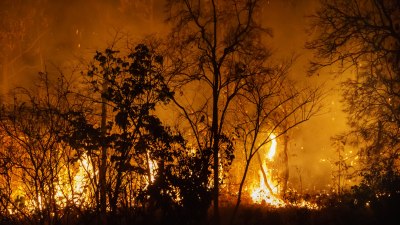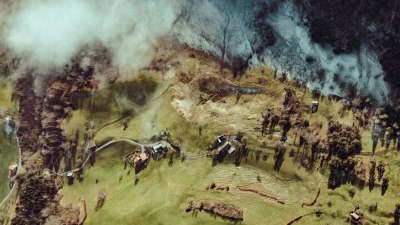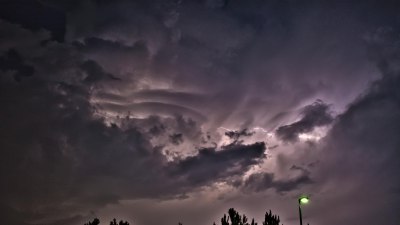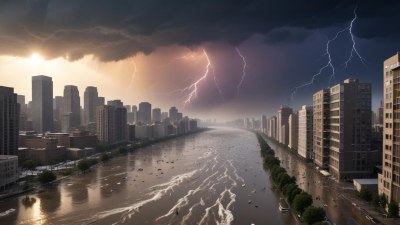How Wildfires Can Create Their Own Thunderstorms
Explore the connection between wildfires and the formation of thunderstorms, unveiling the intriguing science behind this phenomenon.

Wildfires are among nature's most destructive forces, consuming vast areas of land and changing ecosystems forever. But one of the lesser-known phenomena related to wildfires is their ability to generate their own thunderstorms. This interaction between fire and atmospheric conditions is both fascinating and complex, providing insights into the dynamics of weather and climate. In this article, we will delve into how wildfires can produce thunderstorms, exploring the science behind this process and its implications on firefighting and climate patterns.
The Basics of Wildfire Behavior
To understand how a wildfire can create thunderstorms, it's essential to first grasp the mechanics of wildfires themselves. A wildfire, often exacerbated by dry conditions, strong winds, and abundant fuel (such as dead trees and underbrush), occurs when flames spread uncontrollably through vegetation. The fire generates a significant amount of heat, which causes the air above it to rise rapidly. As this hot air ascends, it creates a low-pressure area that draws in cooler air from surrounding regions, leading to more intense fires.
The Role of Heat in Thunderstorm Formation
As wildfires burn, they release not just smoke and carbon dioxide but also immense heat into the atmosphere. This heat can be sufficient to lift air thousands of feet into the sky, effectively turning the wildfire into a localized heat engine. When the heated air rises, it cools as it ascends, leading to condensation and cloud formation. These clouds can become cumulonimbus clouds, which are necessary for thunderstorm development. Therefore, in the case of wildfires, the intense heat can trigger thunderstorms directly related to the fire's activity.
Cumulonimbus Clouds: The Thunderstorm Makers
Cumulonimbus clouds are towering clouds linked with thunderstorms, characterized by their dense, vertical development. They occur when hot air rises high enough to reach the upper troposphere, where temperatures are significantly cooler. In wildfires, as the smoke and heat rise, they nourish these types of clouds. The combination of moisture and energy creates an atmosphere ripe for storm development. As the clouds grow, they can produce lightning, thunder, and precipitation, forming what are known as pyrocumulonimbus clouds – clouds generated by fire.
The Pyrocumulonimbus Phenomenon
Pyrocumulonimbus (PyroCb) clouds are a specific type of cloud formation that can result from intense wildfires. These clouds can reach altitudes of 30,000 feet or higher, often surpassing typical thunderstorm heights. As the wildfire continues to burn and produce heat, larger updrafts form, carrying smoke, moisture, and various aerosols into the atmosphere. These clouds can create their own weather patterns, producing lightning strikes that can further ignite new fires, creating a self-sustaining cycle of wildfire and weather.
The Impacts of Thunderstorms Generated by Wildfires
The thunderstorms generated from wildfires can have both positive and negative impacts. On the one hand, they may lead to precipitation, offering some relief to the fire by dampening flames and reducing the spread. On the other hand, the lightning associated with these storms can ignite new fires in the vicinity, exacerbating the situation. Additionally, the rainfall produced can lead to flash flooding and mudslides, especially in denuded areas where the vegetation has been removed by fire.
Climate Connections
The interplay between wildfires and thunderstorms extends beyond immediate weather effects; it can also be a part of larger climatic systems. Wildfires are more prevalent in conditions of drought and high temperatures, both of which are increasing as a result of climate change. As wildfire frequency and intensity grow, so too does their ability to generate thunderstorms. This trend can contribute to a feedback loop where increased fire activity leads to more thunderstorm activity, which in turn may lead to more fires. Understanding this relationship is crucial for predicting future climate scenarios and managing wildfire risks.
Fire Weather: The Role of Meteorology
Meteorological conditions play a significant role in determining when and how wildfires occur and how they might influence thunderstorm development. Factors such as humidity, wind speed, and temperature can influence the behavior of wildfires and the likelihood of thunderstorm formation. For instance, warm, dry air can exacerbate wildfires and promote vigorous thunderstorm activity, while moist air can lead to increased rainfall but may also trigger more powerful lightning storms. Meteorological data is crucial for fire management agencies to predict and mitigate wildfire impacts.
Addressing the Wildfire-Thunderstorm Link: Implications for Firefighting
The knowledge that wildfires can generate their own thunderstorms has significant implications for firefighting strategies and public safety. Firefighting agencies need to consider the potential for increased lightning activity when planning operations during wildfire events. Moreover, understanding how to respond to rapidly shifting weather conditions in the presence of wildfires is vital to safeguarding life and property. As new technologies and predictive models enhance our understanding of this relationship, firefighters can better prepare themselves for the challenges posed by wildfire-generated thunderstorms.
The Future of Wildfire and Thunderstorm Research
Research into the relationship between wildfires and thunderstorms is still in its early stages, but it is crucial to enhancing our understanding of this complex dynamic. Advances in meteorology, remote sensing, and climate modeling are providing insights into how wildfires interact with atmospheric processes. This research will help improve predictive models, enabling us to anticipate the formation of thunderstorms associated with wildfires, assess risks more accurately, and develop sophisticated strategies for managing wildfires more effectively.
In conclusion, the relationship between wildfires and thunderstorms is a captivating example of how fire can impact atmospheric processes. When wildfires reach the intensity of generating their own thunderstorms, it showcases the intricate links between fire, climate, and weather patterns. Understanding this connection is essential not only for comprehending the impacts of wildfires but also for facilitating better fire management practices, mitigating risks, and ultimately promoting a sustainable approach to managing our ecosystems in the face of climate change.











